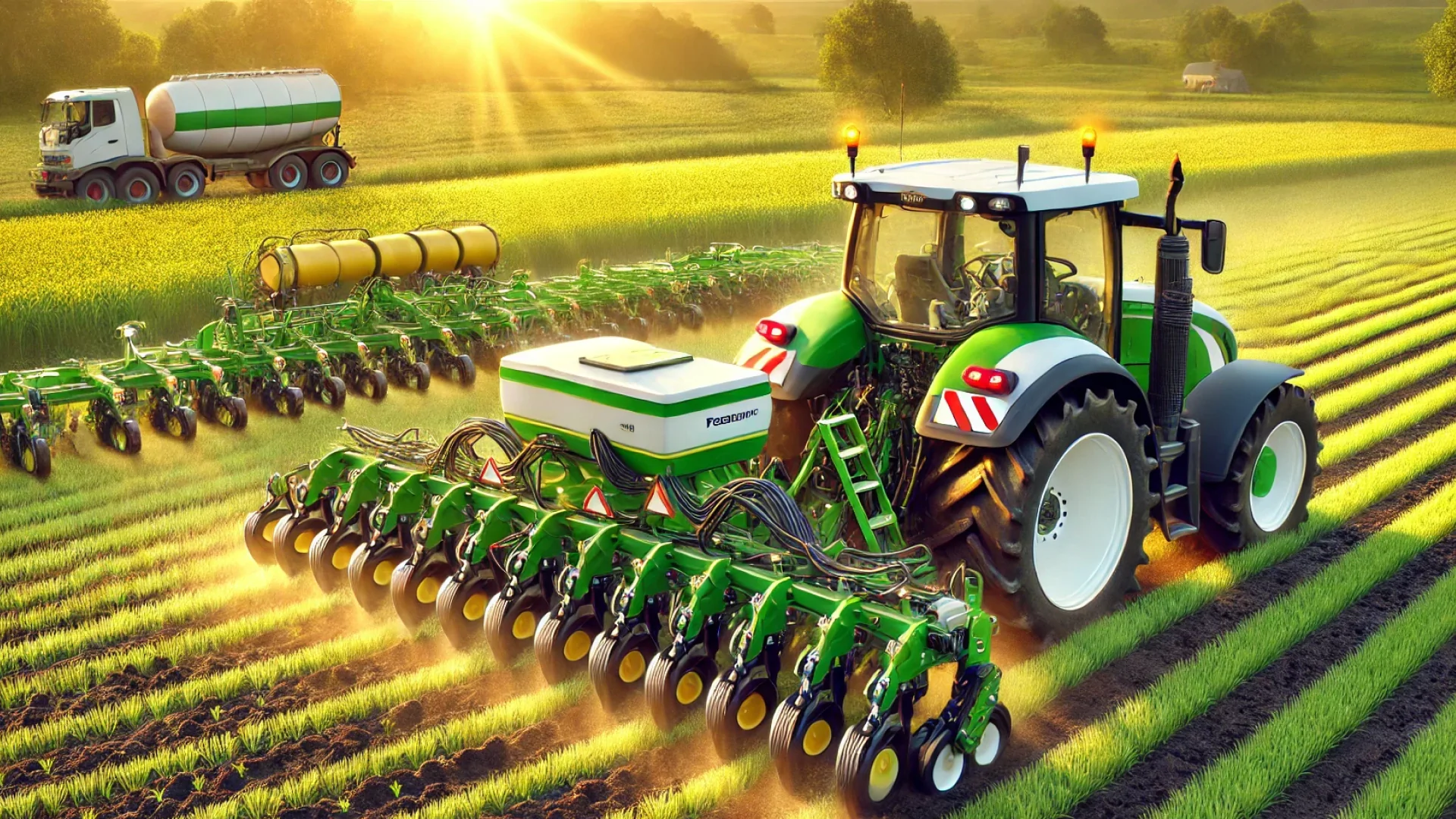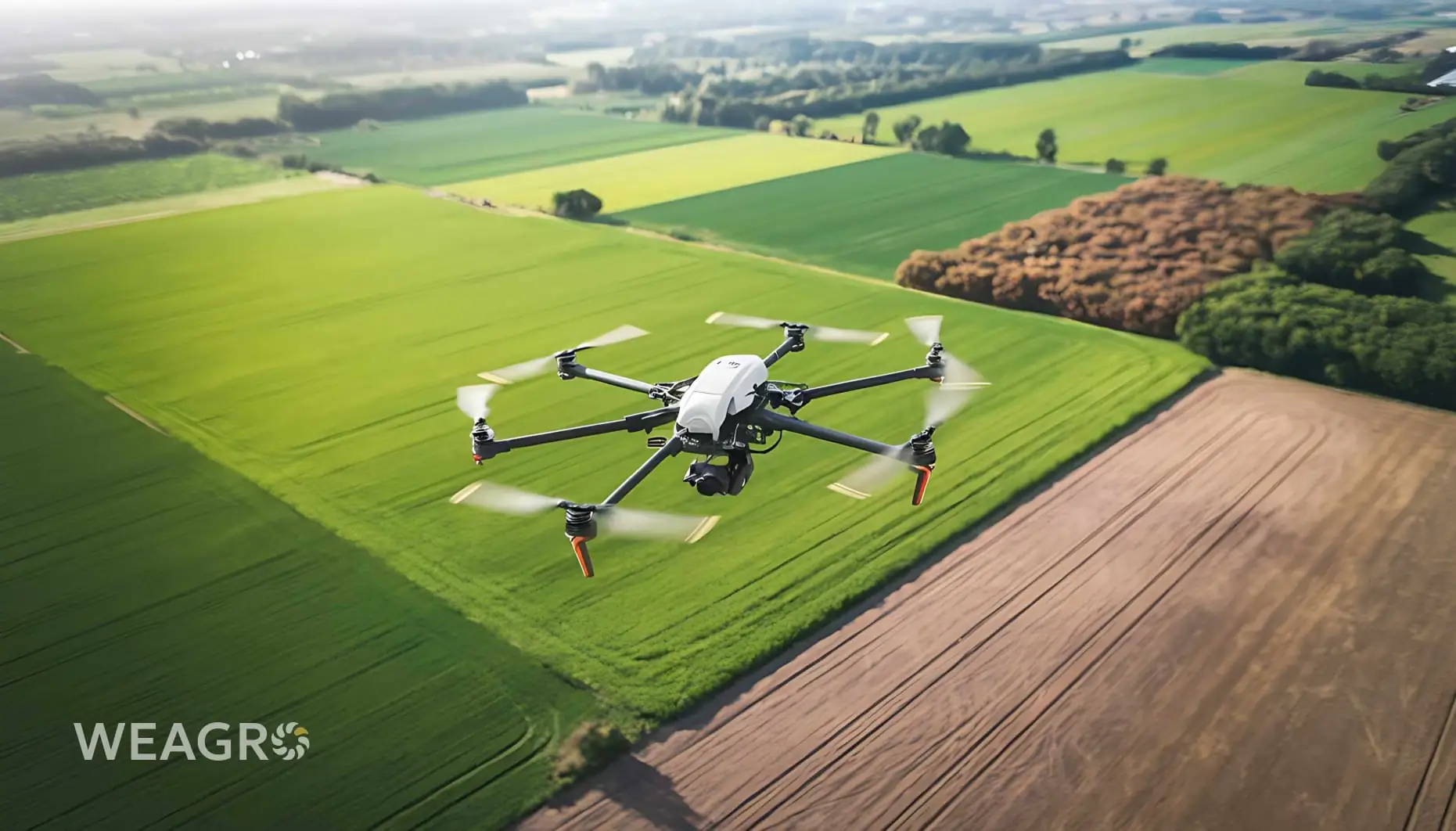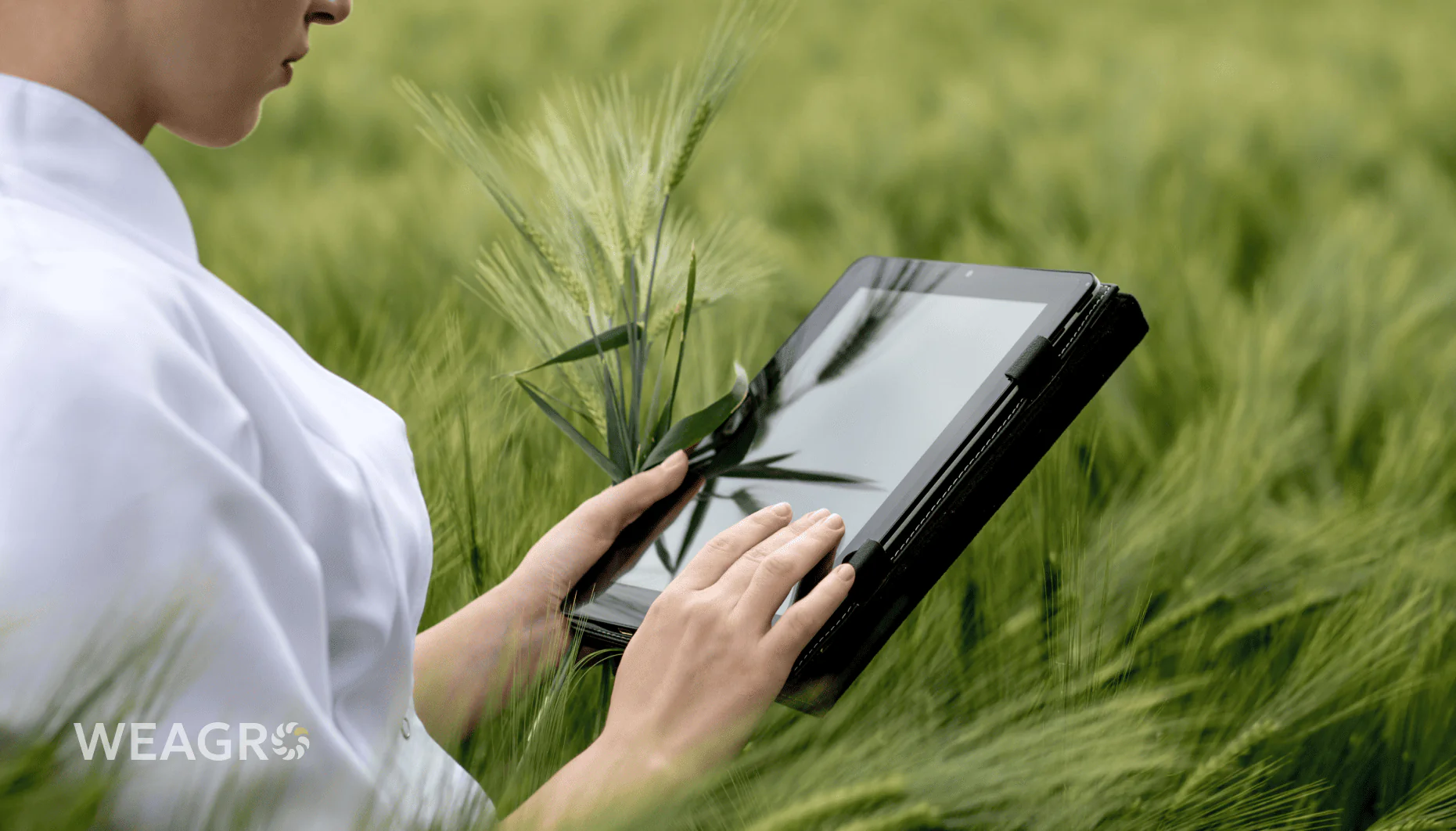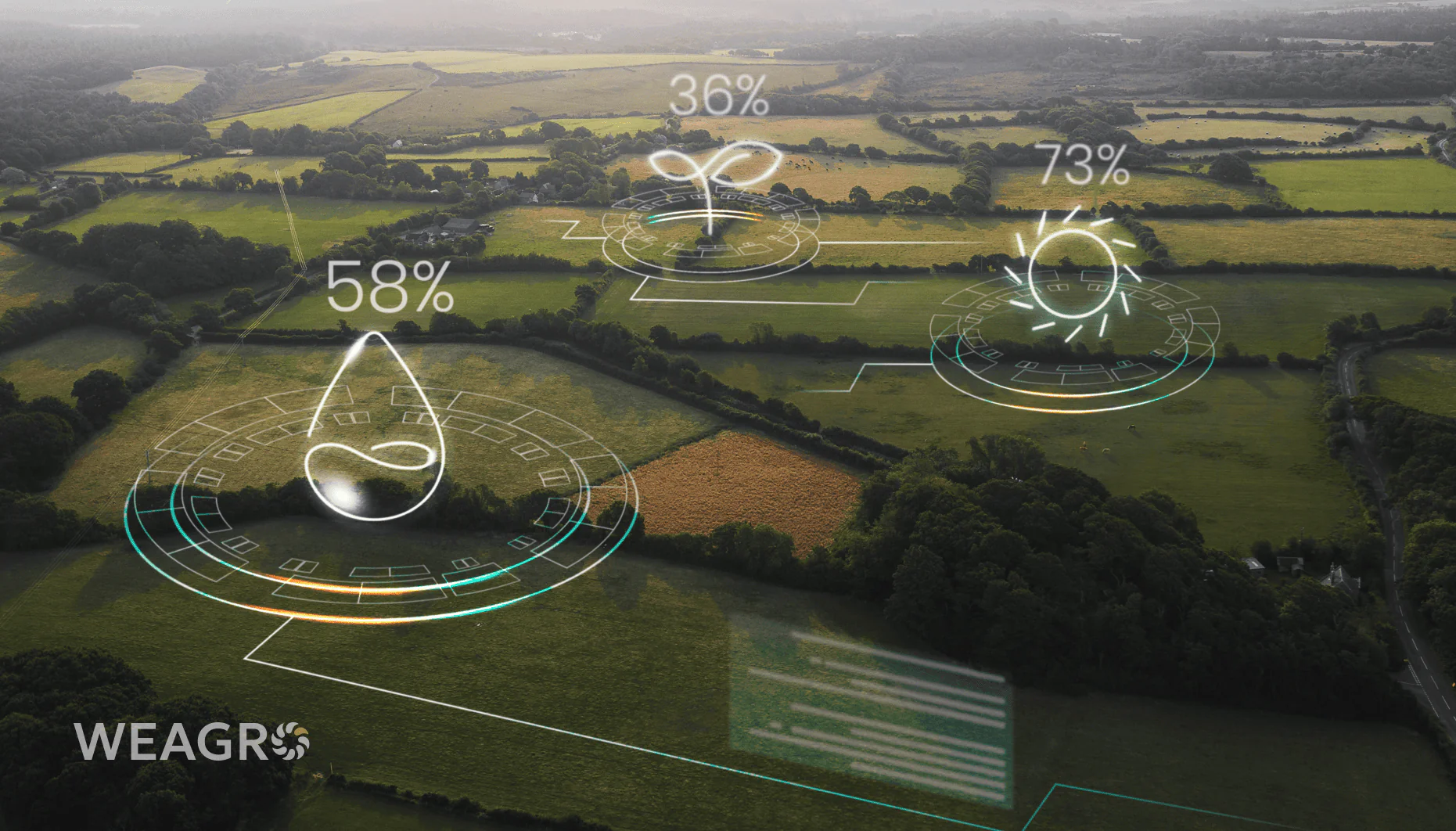Precision agriculture is the most important trend in modern farming. Digitization of production processes and the application of advanced technologies make it possible to significantly increase yields while reducing material resource consumption. This not only increases the competitiveness of individual enterprises but also helps solve global problems such as environmental pollution and food crisis. Let’s explore in detail what precision agriculture is, what specific technologies are used in it, and how to implement it in your farm.
What is Precision Agriculture
By definition, precision agriculture is an innovative approach to farming that allows for increased efficiency through environmental monitoring and regular calculation of key indicators of land plot conditions. This approach was first applied in the early 20th century—experiments with labor mechanization and differentiated material application allowed one agricultural worker to feed 26 other people. In the 1960s, bioengineering technologies and advanced chemicals emerged, increasing this ratio to 1:156.
Currently, one farmer can feed up to 250 people. However, the constant growth of the planet’s population means that by 2050, the ratio of those employed in agriculture to other sectors must increase to 1:500. This fact has become the driving force behind the implementation of new technologies in the agricultural sector.
To the question of what precision agriculture means, we can answer: it is any technology that allows for increased yields or reduced resource costs for growing agricultural crops through digital monitoring systems. This category includes a very wide range of solutions—from sensors on machines to space satellites and global navigation networks.
Advantages of Precision Agriculture
- Increased crop yields. In 2021, several agricultural associations in the USA evaluated the impact of precision agriculture technologies on enterprise productivity. The result was an average increase in corn, soybean, and cereal crop yields of 4%. In countries with traditional farming methods, this effect can be even greater—up to 22%.
- Reduced agrochemical costs. Specialists from the Association of Equipment Manufacturers (AEM) in the USA calculated that precision agriculture systems save up to 7% of fertilizers, up to 9% of pesticides and herbicides, and up to 6% of fuel. In the United States alone, this amounts to 1.4 million tons of chemicals and 30 million tons of diesel fuel. This provides a positive effect not only for agriculture but also for environmental conservation.
- Clean water conservation. Calculations by the same AEM organization show that improved irrigation efficiency alone saves 4% of water. On the scale of the USA, this is the volume of 750,000 Olympic swimming pools. The overall effect of reducing material resource consumption corresponds to saving 15–18% of clean water that can be used for drinking or producing quality food products.
- Soil condition improvement. Precision agriculture allows for applying exactly the amount of seeds, fertilizers, water, and chemicals needed to achieve maximum productivity—no more and no less. This helps preserve the maximum possible residue of beneficial minerals and microelements, as well as avoid soil waterlogging and salinization.
- Maximum control. Precision agriculture is not only about profitability but also peace of mind for business owners or managers. This technology complex allows for tracking the position of each piece of equipment in real time and receiving malfunction alerts.
- High degree of automation. The precision agriculture system is the first step toward robotic farming. Today, you can automate production processes by 50–80%. Experts expect that in the future, one farm worker will be able to manage 10 machines simultaneously without leaving the building.
Read also: Soil: What It Is, Types, and Its Fertility
Main Elements of Precision Agriculture
Modern technologies allow farmers to use a complete complex of solutions that provide a powerful synergy effect. To understand what this involves, let’s examine the main elements of precision agriculture:
- Agrochemical soil analysis. Soil sampling and laboratory analysis to assess nutrient content. This allows for determining water and chemical application needs. During laboratory analysis, plant disease pathogens and pest byproducts can also be detected.
- Field mapping. Using satellite and ground equipment allows for determining plot boundaries, classifying them by certain characteristics, and visualizing the distribution of characteristics. This enables assessment of prospective yields or investment needs with one quick glance. Mapping is a mandatory stage in developing precision agriculture elements.
- Equipment route optimization. Determining farm needs allows for building routes to reduce distance and fuel costs while improving results. Recently, artificial intelligence has been actively used to solve this task.
- Variable rate application. Calculating application rates for seeds, water, fertilizers, pesticides, and herbicides for each zone of agricultural land. Combined with remote control and robotics systems, this allows for selecting optimal equipment settings every few meters or even every few tens of centimeters.
- Weather monitoring. Satellite monitoring systems and artificial intelligence-based solutions significantly improve forecasting accuracy compared to traditional methods. This helps farmers learn about precipitation and natural disasters in time.
- Drone applications. Unmanned aerial vehicles are used for rapid analysis of land conditions using cameras, temperature and humidity sensors, spectrometers, etc. They are also used for rapid chemical application with minimal damage to plants and without additional soil compaction.
Read also: Drones for agriculture: what they are for and how to choose
Precision Agriculture Technologies
Of course, implementing new solutions requires organizing appropriate infrastructure. Precision agriculture systems use the following technologies:
- Global Navigation Satellite Systems (GNSS). Satellite systems that allow tracking the position of sensors in machines and specialized equipment. Positioning accuracy varies from 10 m to 2.5 cm depending on the selected data processing protocol.
- Geographic Information Systems (GIS). These involve collecting quantitative data about the Earth’s surface condition using space, aviation, and ground platforms. They provide visualization of this information in the form of multi-layered interactive maps. Approaches to field zoning in precision agriculture can vary—with image markup and with sensor installation at plot boundaries.
- Yield Monitoring Technologies (YMT). Forecasting enterprise activity results based on information from various sensors. This helps build accurate financial plans, including for submission to banks, insurance companies, and investment funds.
- Variable Rate Technology (VRT). Automatically determines optimal material resource consumption for each plot. On average, it increases profitability by 5–20%, but in unfavorable conditions, the difference can reach 500–600%.
- Remote sensing of Earth (RSE). A complex of technologies for studying physical relief, as well as measuring temperature, humidity, and light reflection degree. Research is conducted using instruments on space satellites, aircraft, and drones.
- Internet of Things (IoT). A data transmission protocol that allows individual devices to exchange information directly, without human participation. This is a mandatory condition for automation and robotization of agriculture, which are important features of precision agriculture today.
Read also: Earth Remote Sensing: Types and Prospects
Precision Agriculture in Ukraine
Our country is gradually adapting to international standards and integrating into the European economic space. Therefore, precision agriculture in Ukraine is becoming agricultural trend #1, helping farms remain competitive even at the global level. Let’s examine examples of successful enterprises implementing new technologies:
- “Epicentr Agro“. According to company representatives, the use of RTK positioning allowed for a 10% increase in machine productivity and a 5% reduction in material resource costs. Additionally, promoting precision agriculture helped reduce losses from theft and irrational fertilizer use.
- “Continental Farmers Group“. The company conducted an experiment using precision agriculture technologies on 30% of its land, mainly in Ternopil region. On average, it reduced monetary costs by 15% while maintaining high yields. It also managed to free up employee working time to improve the quality of equipment repair and maintenance.
- HarvEast. The holding takes an active part in developing precision agriculture in Ukraine. Being among the first to apply new technologies, it increased yields of moisture-sensitive crops by 15–25% in the challenging conditions of the country’s southern and eastern regions.
Currently, precision agriculture and prospects for its use are actively discussed at forums and conferences. Every year, new companies appear on the market offering equipment, software, subscriptions, and comprehensive solutions.
Implementation of Precision Agriculture Systems: Practical Recommendations
Implementing precision agriculture technologies in the daily activities of a farm requires a balanced approach. To achieve maximum results with minimal effort, follow these recommendations:
- Clearly define enterprise needs. If it’s a small farm with limited mechanization, access to maps and agroscouting services is sufficient. A large company can use all possible services—up to real-time satellite monitoring and robotization.
- Find reliable partners. These can be satellite communication system providers, data processing platforms, and agrochemical laboratories. Pay special attention to their reputation, the presence of well-known brands in their client list, and the possibility of concluding long-term cooperation agreements.
- Ensure staff training. Using precision agriculture systems in farming reduces working time costs but increases qualification requirements for engineers. Conduct introductory training, briefings with each change in equipment operating principles, and qualification improvement sessions.
- Select quality software. Applications and online platforms are just as important for precision agriculture as the hardware component. Carefully review all instructions and functionality descriptions. If possible, order the development of an individual solution that will help save time and resources and pay for itself within 1–1.5 years.
- Set up monitoring and analytics systems. Collect data in real time and analyze the connections between your decisions and the results obtained. Use conclusions to improve enterprise management strategy.
Another tip: don’t delay implementing precision farming technologies. If you currently lack material resources to purchase equipment or services, take advantage of favorable agricultural installments through the online service WEAGRO. It allows you to get high-tech solutions now and pay for them later, for example after harvest. Many precision farming providers – equipment suppliers, software developers, and laboratories – cooperate with our service.









